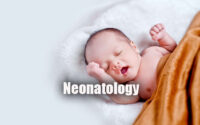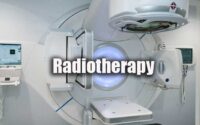Paediatric Surgery Practice Set
Paediatric Surgery Practice Set paper for the written examination is given below. Candidates who are looking for Paediatric Surgery exam Practice Set paper can find in this section. The applied candidates who are getting prepared for the Paediatric Surgery can view this page for the Paediatric Surgery Last Ten Years Practice Set Papers.

Download the Paediatric Surgery Practice Set & Solutions & make it as a reference for your exam preparation. Take advantage of these Paediatric Surgery Practice Set Papers in a proper manner to get qualifying Marks. Last 5 years Paediatric Surgery Practice Set Papers provided here. Candidates who are applied for the above exam can check and download the Paediatric Surgery Practice Set Papers from here.
Practice Set of Paediatric Surgery
1. Which of these is a technique for epispadias repair
(1) Asopa’s repair
(2) Onlay repair
(3) Cantwell Ransley
(4) Duccet repair
2. Term prune belly syndrome was coined by
(1) Leadbetter
(2) Young Dee
(3) Osler
(4) Cohan
3. What is not correct regarding prune belly syndrome.
(1) It is a triad of weak abdominal muscles with urinary tract abnormalities with crypto orchidism
(2) Also called Eagle Barrett syndrome
(3) Pseudo prune disorder is found exclusively in males.
(4) Fully developed prune belly syndrome is found exclusively in males.
4. The term intussusceptum is referred to that part of the bowel:
(1) Which is invaginated
(2) Into which the bowl is invaginated
(3) Which forms the lead point
(4) both the components of intussusception
5. Treatment modalities for Cystic Hygroma are all except
(1) Sclerosing agent
(2) Surgical excision
(3) Bleomycin injection locally
(4) Wait for spontaneous regression
6. The commonest position of ectopic testis is
(1) Intra abdominal
(2) Paraureteric
(3) Medial part of thigh
(4) Superficial inguinal pouch
7. Most common conjoint twins are
(1) Pyopagus
(2) Parapagus
(3) Ischiopagus
(4) Craniopagus
8. Blood volume in Term Newborn is
(1) 50 ml/kg
(2) 55 ml/kg
(3) 85 ml/kg
(4) 100 ml/kg
9. Which of the following is the most malignant germ cell tumor in paediatric age group
(1) Yolk sac tumor
(2) Embryonal carcinoma
(3) Germinoma
(4) Polyembryoma
10. Windsock deformity of intestinal atresia is seen In
(1) Type I atresia
(2) Type II atresia
(3) Type III atresia
(4) Apple Peel atresia
11. According to recent recommendations the ideal time of orchiopexy in undescended testis is
(1) 6 months
(2) 1 year
(3) 1 to 3 year
(4) 5 year
12. Which of the following statements is not true in infants with gastroschisis
(1) High incidence of associated anomalies
(2) Prolonged adynamic ileus following repair.
(3) Associated with malrotation
(4) Complicated by intestinal atresia in approximately 10 to 20% of cases
13. The hormone elevated in Congenital adrenal hyperplasia , also used for its diagnosis is
(1) Testosterone
(2) Oestrogen
(3) 17-OH progesterone
(4) Oxytocin
14. The preferred treatment for Achalasia cardia is
(1) Dorr’s Fundoplication
(2) Heller’s Myotomy
(3) Dilatation
(4) Conservative management
15. The best age for surgery of inguinal hernia in a child is
(1) As soon as it is noticed and diagnosis is confirmed
(2) At 3 months of age
(3) At 1 year of age
(4) At 5 years of age
16. The most common renal tumor in 1st month of life is
(1) Renal cell carcinoma
(2) Wilms’s Tumor
(3) Congenital mesoblastic nephroma
(4) Rhabdomyosarcoma
17. Kidney transplant from brother to sister is an example of
(1) Xenograft
(2) Isograft
(3) Autograft
(4) Allograft
18. 14 day old male child presents with bilious vomiting and blood in stools, on examination abdomen was found to be almost flat, with no gross abdominal signs, most likely diagnosis is:
(1) Matrotation
(2) Neonatal necrotizing enterocolitis
(3) Colonic atresia
(4) Meconium ieus
19. The best procedure for a jejuna atresia located at approximately 20 cm from DJ is
(1) Resection of dilated blind ending jejunum with end to back/end to end anastomosis
(2) Resection of dilated blind ending jejunum with end to side anastomosis
(3) No sacrificing of jejunum, but side to side anastomosis
(4) Gastrojeyunostomy
20. The best course to take when there is mucosal injury while doing Ramstedt’s pyloromyotomy is
(1) Closure of perforation, and testing for airtight closure
(2) Closure of perforation with cover of omentum
(3) Closure of perforation, with a second myotomy on posterior surface
(4) Closure of perforation and anterior myotomy with a second myotomy on the posterior surface
| Practice Set | MCQs |
| Quiz | Questions and Answers |
21. Which statement is incorrect regarding intussusception:
(1) Red Currant Jelly Stool
(2) Resection and anastomosis may be needed if not reducible
(3) Ileocolic are most common
(4) Doughnut sign on ultrasound is diagnostic
22. Preoperative bronchoscopy is indicated in:
(1) Oesophageal atresia with suspected proximal fistula
(2) Oesophageal atresia with suspected distal fistula
(3) Pure oesophageal atresia
(4) Oesophageal stenosis
23. A 12 year old child presents with bilateral non palpable testis, on Diagnostic laparoscopy right testis is found paravesical, left side shows vas deferens and testicular vessels entering the deep ring. The best course of action will be
(1) Fowler Stephen on right and left inguinal exploration
(2) Lap assisted orchiopexy on right and open orchiopexy on left
(3) Fowler Stephen bilaterally
(4) Fowler Stephen on right and orchiecotomy on Left
24. Above laparoscopic and clinical findings are suggestive of:
(1) salvage able right testis absent left testis
(2) salvage able right testis with probably atrophic left testis
(3) bilateral non salvage able testis
(4) Definitely salvageable bilateral testis
25. Surgery for which of the following is not done endoscopically or laparoscopically
(1) Hydrocephalus
(2) Biliary Atresia
(3) Wilms Tumor
(4) Anorectal malformations
26. All are found in Tetrology of Fallot except
(1) Ventricular septal defect
(2) Right ventricular hypertrophy
(3) Atrial Septal defect
(4) Pulmonory stenosis
27. A 10 year old male child presented with Blunt trauma abdomen with abrasions on right hypochondrium, patient is pale has hypotension, and is diagnosed with liver trauma on Ultrasound. Best course of action at present is.
(1) Immediate shift to OT
(2) Blood transfusion and stabilization
(3) Diagnostic laparoscopy
(4) Drain placement
28. The next investigation for above patient should be
(1) CECT abdomen
(2) Diagnostic lavage
(3) Isotope scan
(4) No further investigations needed
29. Complications for Biliary atresia include all except
(1) Jaundice
(2) abnormal liver function test
(3) Cholangitis
(4) Liver failure
30. Each amino acid is represented in DNA as
(1) Single nucleotide
(2) Duplex nucleotide
(3) Triplet nucleotide
(4) Quadruplet nucleotide
31. Most common form of cancer in children is
(1) Leukaemia
(2) Lymphoma
(3) Wilms’ tumor
(4) Brain tumor
32. The most common cause of death in children more than one year is
(1) Trauma
(2) Cancer
(3) Metabolic diseases
(4) Infections
33. In tumorogenesis following happens
(1) Length of cell cycle is shortened and cells are recruited from resting stage
(2) Number of cycling cells is increased and rate of cell death decreases
(3) both (1) and (2)
(4) G3 phase is added to cell cycle
34. The basic techniques for cleft palate repair include
(1) Straight line closure
(2) V-Y lengthening
(3) Z-plasty
(4) All of the above
35. Tension pneumothorax is relieved via
(1) First intercostal space
(2) Second intercostal space
(3) Third intercostal space
(4) 5th intercostal space
36. What is incorrect regarding urethral valves
(1) Type 1 are most common and type 2 you are rare
(2) Type 3 can be found in anterior urethra
(3) Rarely can be found in female patients with disorder of sexual differentiation.
(4) Valve fulgration requires high coagulation current
37. The lap belt complex consists of.
(1) Chance fracture, ecchymosis of abdominal wall and injury to intestine
(2) Thoracic spine fracture, ecchymosis of abdominal wall, with pneumoperitoneum
(3) Cut through injury with seat belt, with frontal hematoma and intestinal injury
(4) Hematoma along pressure site off seat belt, with fracture of ribs and intestinal trauma
38. Chromosome jumping was pioneered by.
(1) Collins
(2) Hirschprung
(3) Stephen
(4) Wilson
39. Which statement is false?
(1) Multisystem organ injury in children is more frequent then adults
(2) Bony injury in children is more frequent then adults
(3) Motor vehicle accidents are the most common cause of trauma in children
(4) Blunt injury is the most common type of injury in childhood
40. Kudson proposed a 2 hit model to 3 explain carcinogenesis on his observations based on:
(1) Familial and sporadic retinoblastoma
(2) Familial and sporadic Wilms’ tumor
(3) Familial and sporadic Adenocarcinoma
(4) Familial Retinoblastoma and Familial Wilms tumor
41. Which statement is not correct regarding Thyroglossal duct remnants
(1) Are the most common developmental anomalies encountered in neck
(2) Are found in the midline from foramen caecum to thyroid isthmus
(3) Thyroid scan may need to be obtained in these lesions
(4) Treatable, mortality is never reported
42. What is the most commonly seen sign of increased intracranial tension in a newbom
(1) Headache
(2) Vomiting
(3) Hypertension
(4) Papilledema
43. What is incorrect regarding urethral duplication
(1) Duplicated urethras are usually found side by side.
(2) It may be complete or incomplete.
(3) Duplicated urethras are found commonly in sagittal plane.
(4) Urethral channel closest to rectum is generally the more functional channel.
44. Genes involved in carcinogenesis include
(1) Proto oncogenes
(2) Tumor suppressor genes
(3) None of the above
(4) Both (1) and (2)
45. This description stands true for which specific organ injury :
Forceful blunt trauma to chest and abdomen, contusion on abdominal wall, presence of nasogastric tube in thorax+/— pneumothorax
(1) Gastric perforation
(2) Lung contusion
(3) Diaphragmatic rupture
(4) Esophageal perforation



